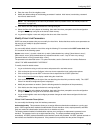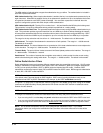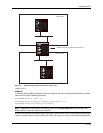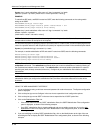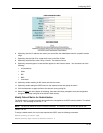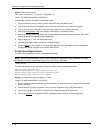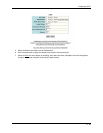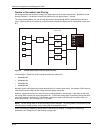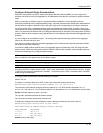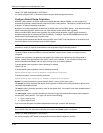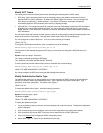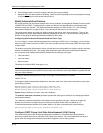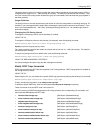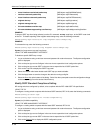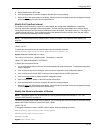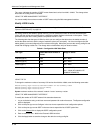
Configuring OSPF
Configure External Route Summarization
When the routing switch is an OSPF Autonomous System Boundary Router (ASBR), you can configure it to
advertise one external route as an aggregate for all redistributed routes that are covered by a specified address
range.
When you configure an address range, the range takes effect immediately. All the imported routes are
summarized according to the configured address range. Imported routes that have already been advertised and
that fall within the range are flushed out of the AS and a single route corresponding to the range is advertised.
If a route that falls within a configured address range is imported by the routing switch, no action is taken if the
routing switch has already advertised the aggregate route; otherwise the routing switch advertises the aggregate
route. If an imported route that falls with in a configured address range is removed by the routing switch, no action
is taken if there are other imported route(s) that fall with in the same address range; otherwise the aggregate route
is flushed.
You can configure up to 32 address ranges. The routing switch sets the forwarding address of the aggregate
route to zero and sets the tag to zero.
If you delete an address range, the advertised aggregate route is flushed and all imported routes that fall within
the range are advertised individually.
If an external LSDB overflow condition occurs, all aggregate routes are flushed out of the AS, along with other
external routes. When the routing switch exits the external LSDB overflow condition, all the imported routes are
summarized according to the configured address ranges.
NOTE: If you use redistribution filters in addition to address ranges, the routing switch applies the redistribution
filters to routes first, then applies them to the address ranges.
NOTE: If you disable redistribution, all the aggregate routes are flushed, along with other imported routes.
NOTE: This option affects only imported, type 5 external routes. A single type 5 LSA is generated and flooded
throughout the AS for multiple external routes. Type 7-route redistribution is not affected by this feature. All type
7 routes will be imported (if redistribution is enabled). To summarize type 7 LSAs or exported routes, use NSSA
address range summarization.
To configure route summarization, use the following CLI method.
USING THE CLI
To configure a summary address for OSPF routes, enter commands such as the following:
HP9300(config-ospf-router)# summary-address 10.1.0.0 255.255.0.0
The command in this example configures summary address 10.1.0.0, which includes addresses 10.1.1.0,
10.1.2.0, 10.1.3.0, and so on. For all of these networks, only the address 10.1.0.0 is advertised in external LSAs.
Syntax: summary-address <ip-addr> <ip-mask>
The <ip-addr> parameter specifies the network address.
The <ip-mask> parameter specifies the network mask.
To display the configured summary addresses, enter the following command at any level of the CLI:
HP9300(config-ospf-router)# show ip ospf config
OSPF Redistribution Address Ranges currently defined:
Range-Address Subnetmask
1.0.0.0 255.0.0.0
1.0.1.0 255.255.255.0
1.0.2.0 255.255.255.0
Syntax: show ip ospf config
8 - 31



